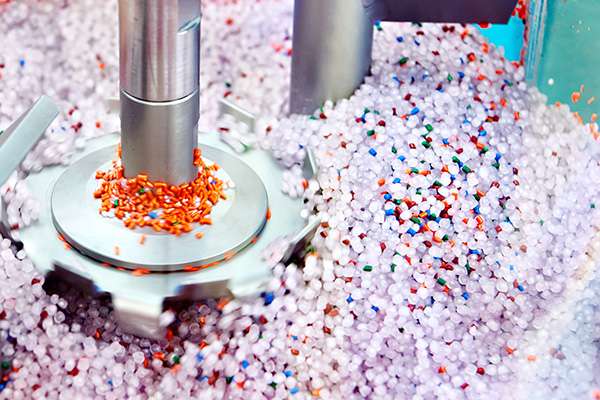It’s impossible to discuss the massive increase in polymer production without acknowledging the environmental impact. On the one hand, the use of plastics in packaging and transportation help to keep emissions down because their light weight increases fuel economy. But the properties that makes plastic so useful in the first place – stability and longevity – make it difficult to dispose of.
Unfortunately, only about 16% of global plastic waste is being recycled or reused. The rest is being incinerated, dumped in landfill, or makes its way into our oceans where it is causing devastating environmental damage. Plastic pollution is said to cause at least $13 billion USD of damage to marine ecosystems per year. This issue is being addressed at the regulatory level, and many countries and organizations globally are putting steps in place to encourage the world to move to a more circular economy regarding polymers.
With polymer recycling and reuse being important for the protection of the environment, thermal analysis can play a prominent role in the sustainability of our natural resources.

In recent years, much legislation has been introduced to reduce the production of plastic that is difficult to recycle and to encourage the re-use and recycling of plastic waste. Some notable highlights include:
The global encouragement of recycling and reuse means it’s more important than ever to analyze polymers before use. Thermal analysis makes using recycled material with confidence possible as it provides a full materials characterization.
For waste plastic, recycling isn’t as easy as metal recycling where it’s easy between humans, instruments and machines to sort metal and detect any impurities. With plastics, there are two methods for recycling: chemical or feedstock recycling, or mechanical recycling.
Chemical or feedstock recycling technologies can break down polymers into simpler molecules using heat and turn them into valuable secondary raw materials however this uses large amounts of energy. Most often though plastics are recycling mechanically: sorted, cleaned, shredded, melted and remolded. However, the more times plastic is melted, the more times polymer chains are broken down, reducing tensile strength and viscosity, making it more lower quality and eventually unusable.
Many are hesitant of using recycled plastic because they can’t be sure of the batch quality and ultimately meeting material properties of the end product. But recycling of polymers and the consequent material quality control and assurance doesn’t have to be difficult or expensive.
For waste polymers and rubbers, analysis plays a crucial part in sorting them for recycling and reprocessing. Thermal analyzers are able to detect and identify potential impurities and provide continuous analysis of recycled polymers to ensure product specifications are met.
Both differential scanning calorimetry (DSC) and thermogavimetric analysis (TGA) provide an easy and fast way for analyzing recycled polymers cost-effectively. You can also use simultaneous thermogravimetric analysis (STA) which combines DSC and TGA to collect multiple types of information simultaneously.
When polymers are received for recycling, it’s easy to verify, detect, identify impurities and gain insights of plastics with thermal analysis.
The main advantage of thermal analysis is that it precisely analyses fundamental bulk material properties. Even for complex materials, you can often tease out the behavior of the constituent polymers to ascertain what’s in the mix. It’s applicable to a wide range of materials and doesn’t need material specific calibration curves, so you can easily investigate novel materials.
There is very little sample preparation, with no harmful chemicals to contend with and, with a little training, the analyses can be run by anyone, especially with an instrument that has a high degree of automation.
Our Real View® camera system that integrates seamlessly with our range of DSC, STA and DMA analyzers to observe changes in the sample status during analysis in real-time. Images reveal changes in sample shape, size, color, and other properties. The images can be recorded and are automatically linked to the thermal data by timestamp.
Polymer recycling and reuse really shouldn’t be difficult, it just means having the right equipment to make the task easier.
The best way to protect your brand’s reputation is to ensure your products always meet specifications. With so many different techniques that come under the ‘thermal analysis’ umbrella, which you use will depend on the characteristics you need to verify. To help demystify thermal analysis of polymers and give advice on best practice, we’ve created a practical guide with our TA expert Olivier Savard.
Download the guide
You might also be interested: